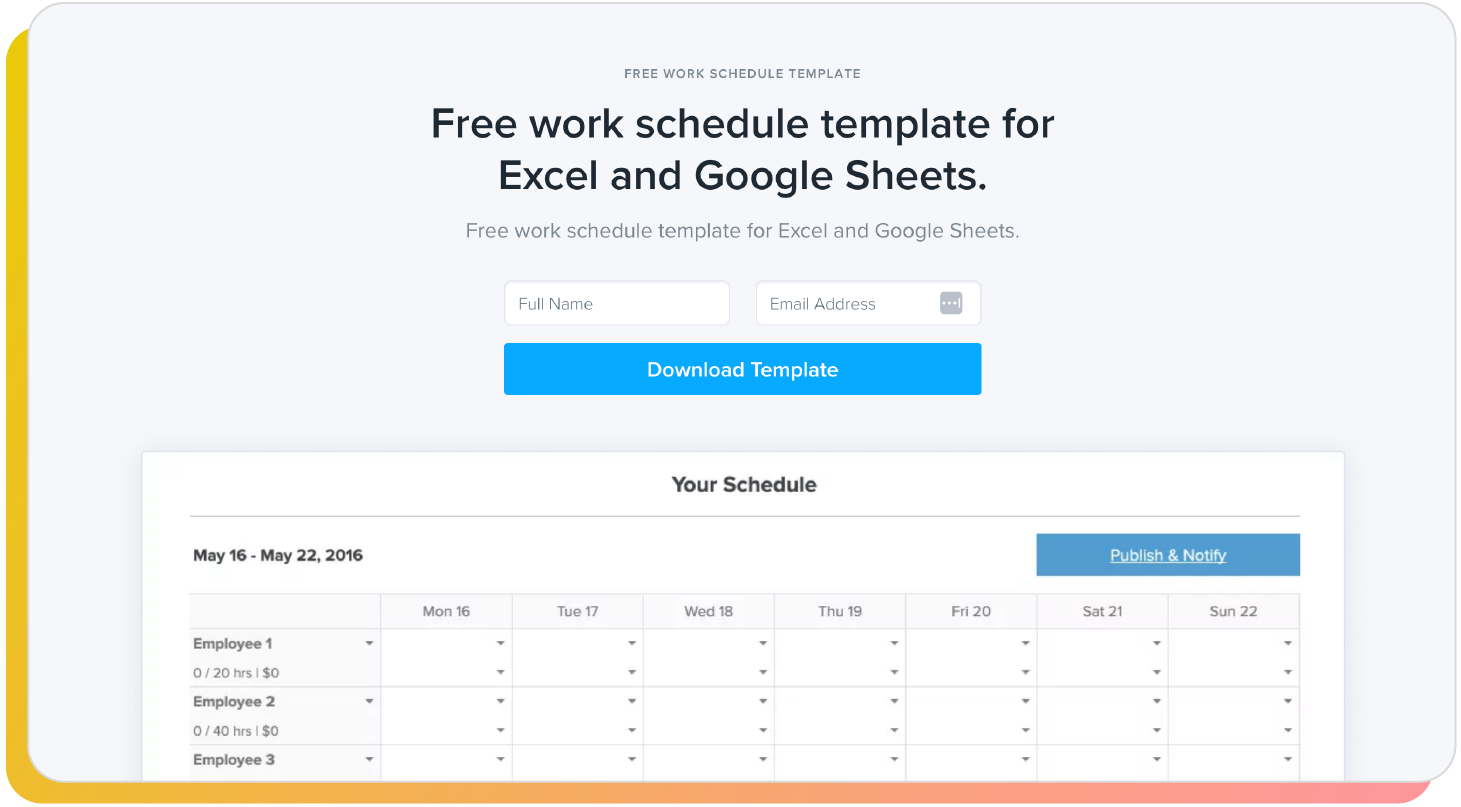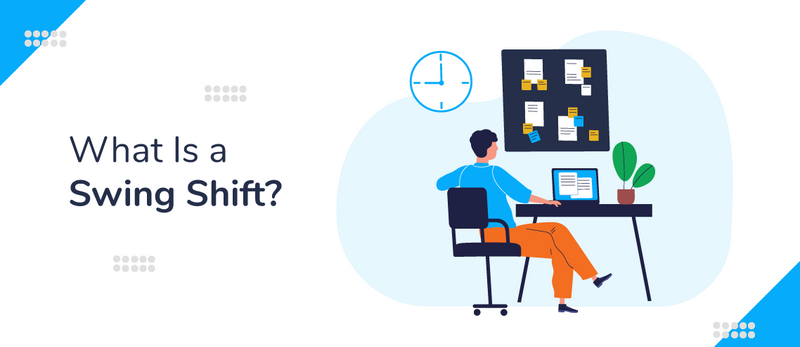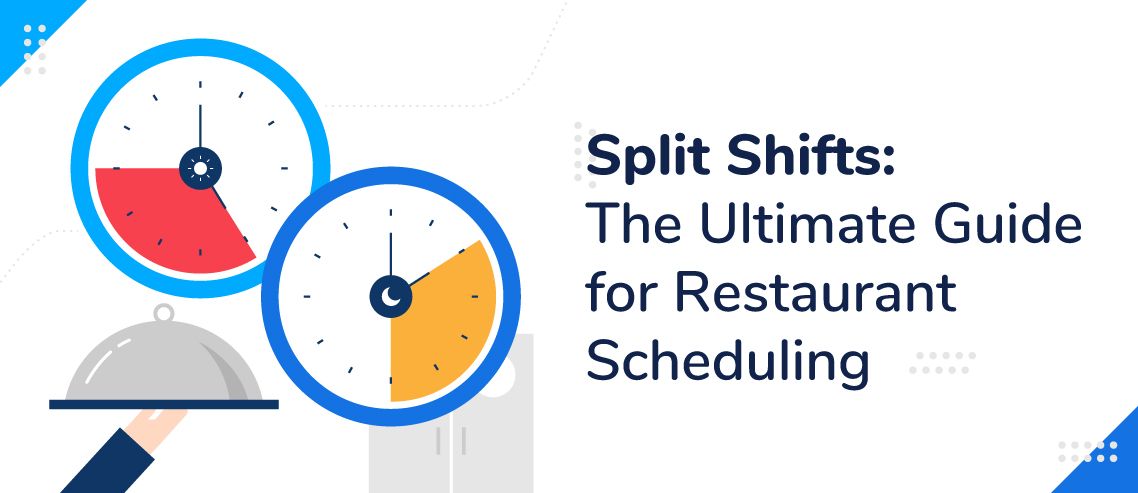Clopening Shifts: The Ultimate Guide

Around 50% of employees regularly put in clopening shifts at barely two weeks’ notice. In fact, one in ten workers get less than a week’s notice.
This work schedule instability, when combined with clopening shifts, has increased psychological distress levels, reduced quality of life (QoL), and decreased happiness levels among employees.
So what are clopening shifts, how do they affect employees’ work-life balance, and why do they contribute to negative employee outcomes?
What are clopening shifts?
Clopening shifts — a combination of the words “closing and “opening” — occur when employees work a closing shift and come back to the office for their opening shift, with barely four to six hours of downtime in between.
For instance, if an employee works at a store from 5 pm to 12 am, closes it at midnight (which can take at least half an hour), and comes back at 6 am to get everything in place before the morning, they’re pulling off a clopening shift.
What leads to clopening shifts?
Clopening shifts can be the result of both deliberate and careless scheduling. However, they are more often caused by the latter than the former. But these aren’t the only reasons why they happen.
Let’s explore some other reasons below.
1. Shortage of employees
While some businesses deliberately keep their teams lean to ensure their profit margins are high, others either struggle to hire people or experience high turnover rates, which require them to rehire constantly.
Whatever the reason, not having enough people to manage a 24/7 business requires it to take desperate measures — and that means asking their employees to cover both opening and closing shifts.
2. High turnover
Businesses that struggle with high turnover may not have enough trained employees to handle complicated and have-to-get-right tasks like opening and closing. They may be forced to depend on employees who’ve stayed with them for years.
This means only a select few employees will be able to handle these tasks, which will inevitably cause managers to schedule clopening shifts.
3. Cutting costs
Companies may resort to scheduling clopening shifts instead of hiring more people because the total cost to hire a new employee can be 3x to 4x their salary.
If you’re paying $15 per hour, you’d have to spend $45 to $60/per hour to find the right employees in the first place. Then there’s the added cost of training, which usually requires an average of 46.7 hours of another employee’s time.
These costs can quickly add up when you want to hire several employees, which is why many retail and service businesses schedule clopening shifts for their experienced employees instead.
Which industries commonly see clopening shifts?
Here are some industries that commonly struggle with clopening shifts:
- Retail
- Clothing
- Construction
- Food service
- Restaurants
- Convenience stores
- Hospitals
- Nursing homes
- Franchises
- Law enforcement
- Firefighters
- Gas stations
- Universities
- Call centers
Any company that stays open for extended or 24 hours might have to schedule clopening shifts to make up for the labor shortage or to lower costs.
What are the consequences of clopening shifts?
While clopening shifts help companies save time and money on hiring, staffing, and scheduling, they’re expensive for everyone.
Let’s look at some negative outcomes of clopening shifts:
1. Sleep deprivation
Clopening shifts can cause disruptions in employees’ sleep schedules. This can cause them to get sick more often, have an increased risk of developing cancer, and experience a 45% higher risk of getting coronary disease.
This may cost companies anywhere from $2,000 to $3,500 per worker and lead to an annual loss of over $50 million.
2. Low productivity
Employees who are sleep-deprived are more likely to slack off or take more breaks. And if there’s nobody to pick up the slack or make up for their absence, companies will experience a significant loss in productivity.
Similarly, team leaders or supervisors working back-to-back clopening shifts may be less polite toward their subordinates. This may cause junior employees to feel less engaged in their work, causing delays and service quality problems.
3. Loss of work-life balance
Last-minute scheduling changes, unpredictable schedules, and too many clopening shifts can wreak havoc on employees’ work lives, especially if they’re married or have children.
Unstable schedules have also been linked to increased work-family conflict, which can cause the physical and mental health of employees to worsen.
How to avoid clopening shifts?
Clopening shifts are bad news for everybody involved, including you, your employees, and your business. But how do you avoid them? Simple — by creating an effective schedule. Here’s how you can do that:
1. Understand what your employees want
Instead of creating schedules around what you expect from your employees, ask them what they’re looking for when working with you.
Here are some questions to try:
- What shift timings are you most comfortable with?
- Is there anything you would change about your shift time?
- Are you open to working clopening shifts? (Yes, some employees do prefer them.)
- How long of a break do you prefer between shifts?
These questions can help you make scheduling decisions that prioritize your employees’ well-being while doing the best for your business.
2. Use scheduling software
Manual scheduling is complex and can often cause you to create accidental clopening shifts, especially if you don’t have many employees to work with. That’s where scheduling software like ZoomShift can help.
It makes it easy for you to create schedules, ensures you haven’t created unrealistic shifts, and reduces the time spent on scheduling.

Get you free work schedule template here.
3. Provide notice in advance
Clopening shifts and shift uncertainty cause employees to experience more stress, which can lead to them becoming sick or missing their shifts.
To avoid that, share shift schedules with your employees as soon as possible, ideally three to four weeks before you implement them. This extra time will help your employees:
- Trade shifts (if they have plans or are studying)
- Get childcare or other types of care for their parents
- Inform you about anything that may stop them from getting to their shift
Automate clopening shifts out of your schedule with ZoomShift
Clopening shifts reduce productivity, breed resentment (if you don’t ask before you assign them), and increase turnover. To avoid all of that, it’s crucial to create work schedules that keep employee well-being in mind.
Unfortunately, it’s impossible to fit your work schedule to every single employee requirement. But you can keep your business fully staffed and your employees happy by automating the scheduling process using ZoomShift.
This app can help you track employee shift preferences, understand staffing needs while sitting in your office, and create schedules that work for your entire team. Want to learn more? Try out our 14-day free trial.
Clopening Shifts Frequently Asked Questions (FAQs)
Is clopening legal?
Yes, clopening is legal. There are currently no federal laws that require employers to schedule a minimum number of hours between shifts for adult employees. However, some states may prohibit certain employers from scheduling clopening shifts.
For instance, the NYC Fair Workweek Law prohibits fast food companies from scheduling back-to-back opening and closing shifts with less than 11 hours between them — unless they obtain their employees’ consent.
What is the shortest legal shift?
No federal or state law provides minimum shift requirements for part-time or full-time employees.
However, employees under 16, those subject to collective bargaining agreements, and people working in regulated industries like trucking, may be subject to specific scheduling laws.
What is the longest shift you can legally work?
No federal laws require adult employees to stick to a minimum shift requirement. However, there are exceptions to this rule.
For instance, employees under 16 aren’t allowed to work longer than eight hours/day when school isn’t in session. Similarly, people in the trucking industry cannot work shifts longer than 11 hours if they’ve been active for 14 consecutive hours.
How many hours is a double shift?
A double shift is when an employee works two consecutive shifts. For instance, if an employee works from 9 am to 5 pm and then 5 pm to 12 am, they’re doing a double shift.
This type of shift usually happens after overtime is surpassed and lasts between 10 to 15 consecutive hours.
JD enjoys teaching people how to use ZoomShift to save time spent on scheduling. He’s curious, likes learning new things everyday and playing the guitar (although it’s a work in progress).



